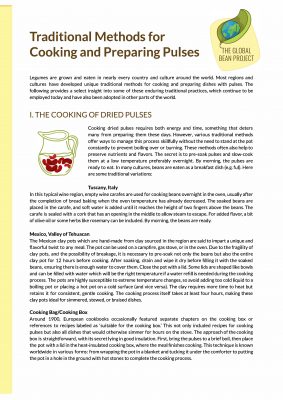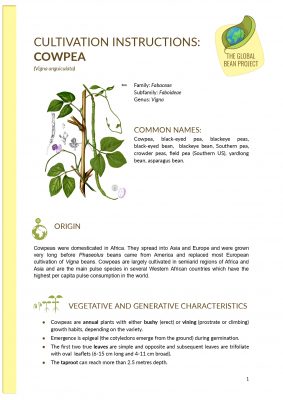THE NEED FOR BALCONY GARDENS
Increased urbanisation has left less space for growing our vegetables on farms unlike in our rural areas. So space is one of the biggest constraints for farming. But to eat a healthy diet you need to grow your food in your locality! So growing food on balconies is one of the beautiful methods to be healthy and keep our environments healthy. In order to overcome the space constraints, we have to optimise and utilise every inch available as efficiently as possible. Growing legumes on a balcony and deciding what to grow requires the correct knowledge about how to create a sustainable source of organic legumes for consumption. This form of urban gardening can be a relaxing and a stress-buster hobby.
So the roles of a balcony garden are to:
- Eat tastier, fresher, healthier food,
- Reconnect with the rhythms of nature,
- Avoid pesticides and rebuild our community,
- Reduce the amount of waste we send to the landfill every day.
GARDENING TECHNIQUES
1. Composition of the balcony garden
Space is one of the most important factors for designing a garden. And when we are dealing with small spaces on a balcony, it is very important to choose where to grow the plants and the correct containers for the plants. We can’t create a ‘legumes only’ balcony garden. Along with the legumes – the peas or beans – a few greens or fruiting vegetables can enhance the overall health of the soil as well as add variety to your garden.
2. Duration of sunlight
The foremost factor in designing a balcony garden is the duration of sunlight which your balcony receives. As most legumes grown for vegetables are fruiting plants, they should be grown on a South facing balcony or can be grown on an East facing balcony if that balcony gets 4 h of direct sunlight without any other obstruction such as a building, tree etc. A West facing balcony is also a good option for growing. (All these are applicable for the Northern Hemisphere). A North facing balcony will not get any sun in the northern hemisphere because ambient light will simply not do, you need at least 3-4 h of direct sunlight to grow anything edible. The best way to assess how much sunlight your balcony receives is by stepping out onto that area several times in a day and simply observing which areas receive direct sunlight and for how long. Once you’ve calculated which parts of your space receive the maximum sunlight, you can move on to designing the garden and decide which legumes to grow.
3. Choice of the container
Finding the right home for your plants is very important for a sustainable system. For your balcony garden, it is very important to choose the containers in which you want to grow the plants. You should consider: a) Soil type, b) Container depth, c) Container material
1. Soil type
All plants like porous, nutrient-rich soil. For legumes, a loamy soil is preferred. Legumes don’t require a Nitrogen-rich soil. Managing the soil in a container garden is crucial. At times it becomes very frustrating when trying to grow vegetables in pots of hard, dry, cracked soil. It’s important to understand how this can be avoided.
In containers, there are two major limitations when it comes to soil quality:
- Compaction: This is when the soil becomes hard because there are no worms or other sub-soil fauna to carry out nature’s own form of loosening or fluffing up soil.
- Lack of nutrients: This is simply due to the lack of space for roots to spread out and find nutrients.
Potting mixture
An ideal potting mix should be light, airy, long-lasting, moisture-retentive and contain diverse nutrients i.e. the soil should have good aeration, drainage, proper nutrients, microbes and worms that decompose the organic matter. In order to achieve all these characteristics of the soil we need to add various ingredients to the soil which should include:
- Cocopeat: Made from powdered coconut husk, this inert medium with excellent water-holding capacity retains the moisture.. In addition, it is light, which helps to keep the soil crumbly and well-aerated.
- Soil: It provides your plants anchorage for the roots to hold onto and grip. It also contains slow-releasing nutrients. For legumes loamy soil is preferred.
- Sand: Adding sand helps with drainage and makes your potting mix more porous.
- Compost: This provides the nutrient element of the mix: dried cow dung, vermiculture, home-made compost, leaf compost, or – best of all – use a combination of different composts.
Plants, like us, love variety in their food too. To get your potting mix right you’ll need to experiment with local soils and specific plants to see what works best in your area.

Mulching – a must for both containers and beds
Mulching is placing a layer of dry organic matter over the soil which forms a protective layer on the soil. You can choose either dry mulch or green/living mulch. Dry mulch includes all dry/dead/brown biomass like leaves, wood shavings, cocopeat, crop residues, etc. And green or living mulch is a layer of green-cover planted specifically to enrich the soil. For example: alfalfa (Medicago sativa), stylo (genus Stylosanthes), Sesbania bispinosa, sunn hemp (Crotalaria juncea) or horse gram (Macrotyloma uniflorum). These are all from the legume family as well!
2. Container depth
Container choice depends on what you’d like to grow, since different plants require different depths. Since the goal is to grow legumes we need to first select them. Common legumes include beans, peas and clovers. Some of the best legumes to produce vegetables are broad beans, cluster (Cyamopsis tetragonoloba) beans, french beans and green beans.

Clovers such as red clover, white clover and sweet clover can be used as a cover crop. None of these are grown in isolation, rather they are grown with other companion plants which include microgreens/herbs, root vegetables, fruiting vegetables and leafy vegetables. French Beans, Fava beans, Snow peas, Snap Peas, Garden Peas can all be grown in 20-30 cm containers.
3. Container material
Once you’ve decided on the depth of your containers, you’ll need to decide which material to use. Each material has its own pros and cons.
Depending on your specific situation you can decide what works best for you:
- Clay/ terracotta containers
- Highly-quality/virgin plastic
- Recycled fruit trays
- Bamboo baskets/ boxes



Different gardening techniques for urban agriculture
Pictures: © Lopamudra Sahu
WHICH LEGUME SPECIES TO GROW ON BALCONIES?
Since space is limited, we have to think about the varieties that are high yielding.
- French bean bush varieties are great for balcony gardens and they can give a harvest within two months of sowing. 16 sq ft area (1.5 m²) is good enough to grow sufficient french beans for a family of four.
- Fava beans (broad beans) is another high yielding, fast growing legume that can be easily grown in balcony gardens. An 8 to 16 sq ft area (0.75 to 1.5 m²) is good enough to get a good harvest for a family of four.
- Climbing varieties of french beans are very high yielding and are light vining plants so they can be easily grown on a balcony with a good vertical support/trellis for the plant to climb up. Two plants of this legume are enough for a family of three to four people.
- Garden peas, snow peas and snap peas, all three varieties of peas are good to grow in balcony gardens as they love to climb on trellis and can be easily trained on growing vertically in a small balcony.
Snow peas, garden peas, snap peas are all very ornamental in their appearance and they all have very beautiful flowers. Growing these in your balcony garden will not only provide you with food but also look attractive! Not only the pea pods and seeds, but also the tender shoots of peas are edible.
THE ART OF SOWING
New balcony gardeners often find the process of sowing difficult. The very first question that arises is “how many seeds do I need to plant in a given space?”.
The first answer is to observe the stages of a plant’s growth. While sowing, we need to picture, in our mind, the fully grown plant. In order to do so, observe whether a plant grows into a bush, like aubergine or chilly; or vines upwards like bitter gourd or cucumber; or sprawls along the floor like bottle gourd or pumpkins; or grows downward into the soil like carrot and radish; or soars into the sky like a moringa tree – the possibilities are endless.
So, go out, and start observing! Once we are acquainted with our plants, we can easily decide how much ‘living room’ they need. On this basis, we can understand how much space to leave between plants while dealing with relatively smaller spaces.
To begin to develop this sense, we will use a simple technique called ‘square-foot gardening’. Each box of the plan represents an area of one square foot, which are squares of 30 cm side.

The second question to ask is “when to sow?”.
The answer depends on where you live. The different regions of Europe have different planting times, see our cultivation sheets for general guidance. As a general rule, fava beans (broad beans) and peas can be sown in temperatures cooler than any of the french beans or runner beans. So they can be sown directly into the containers, irrespective of where you live. In Northern Europe, french and runner beans will need to be germinated in a warmer temperature indoors. A temperature of 15° C is ideal. Plant them out into the containers when they are starting to grow on from their 2 seed leaves. Unless they can be given sufficient light growing indoors, they will need to be planted out before they start to be starved of light and grow too leggy.
In all cases, however, containers on a balcony, particularly if they are placed in the warmest part of the balcony, will offer the seeds warmer germination conditions than in open ground. They are also likely to be less troubled by creatures that would like to eat the pea or beans seeds, although a netting cover to protect the seeds from birds might be wise.
| And now, to your seeds, containers and soil, and enjoy gardening on your balcony! |
Authors:
Edible Routes is an earth and people-friendly organisation dedicated to helping people to grow their own food. It’s one of India’s largest organic farming organisations and aims to regenerate unused land in urban areas into self-sustaining farms using natural and sustainable methods.
Article written in collaboration with Nicolas Carton, Agronomist and pulse ambassador.
Version 1, April 2023. This work is licensed under a Creative Commons License (CC BY-NC-ND 3.0)




